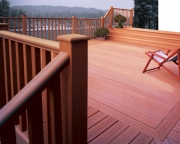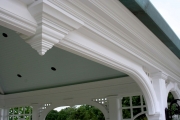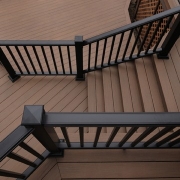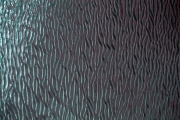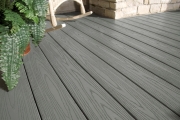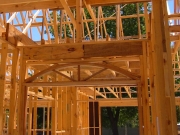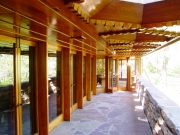Composite Decking
Composite decking is exterior deck board made from a combination of organic material and plastic. Developed in the early 1990s, composite decking has experienced significant growth in the building industry and is used on residential decks, waterfront docks, and commercial boardwalks. Many manufacturers produce composite decking products with several new products appearing each year, often with different material combinations.

